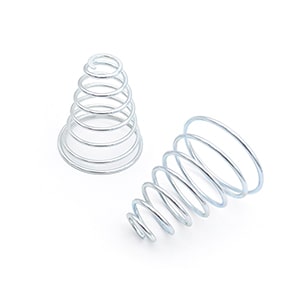Get unique, complex parts easily. No matter your requirements, Chaoyi Spring creates hard-to-produce coil springs and wire forms.
Let us help you create the custom wire form you need, from S-hooks and J-hooks to utility hooks and more.
We work closely with customers across a wide range of industries, helping them design and manufacture made-to-order parts.
Why choose Chaoyi Spring? We prioritize customer-focused collaboration, modern equipment and the latest technology to make your parts per print.
Find the information and guidance you need, from measuring a spring to learning about materials, placing an order and much more.
The act of compressing springs on struts might seem like a simple task, but it's an essential part of various automotive maintenance and repair operations. Whether you're replacing shock absorbers,


The act of compressing springs on struts might seem like a simple task, but it's an essential part of various automotive maintenance and repair operations. Whether you're replacing shock absorbers, working on suspension components, or even just performing a basic inspection, understanding the nuances of spring compression is crucial. This guide delves into the mechanics behind spring compression, explores the tools and techniques involved, and offers practical tips to ensure safe and efficient spring handling.

Springs, those coiled wonders of metal, are designed to store and release energy. They are essential components in suspension systems, providing the crucial damping force that keeps your vehicle stable and comfortable. However, to access or replace parts connected to the strut, like shock absorbers or control arms, we need to compress the spring. This can be a tricky endeavor if not handled correctly.
Imagine a spring, tightly coiled, wanting to expand. It's like a coiled-up snake, ready to strike. The more you try to compress it, the more resistance it offers. This resistance, known as spring force, is directly proportional to the spring's stiffness and the amount of compression. The higher the stiffness, the more force is needed to compress the spring. This is why different springs have varying compression characteristics.
Manually compressing a spring is not only difficult, but also incredibly dangerous. The potential for the spring to suddenly release and cause injury is very real. That's where spring compressors come in. These specialized tools are designed to safely and efficiently compress springs.
There are several types of spring compressors available, each tailored to different applications. Some are specifically designed for strut springs, while others can handle a wider range of spring types.
Here are a few common types:
When choosing a spring compressor, consider the following:
Now that we understand the basics of spring compression and have chosen our tool, it's time to take on the task. Here's a step-by-step guide to ensure safe and efficient spring compression:
Spring compression can be dangerous if not performed correctly. Always prioritize safety when working with springs.
For advanced mechanics or situations requiring more precision, specialized spring compression techniques are used. These techniques often involve tools like air-powered compressors, hydraulic presses, or even custom-made jigs.
When working with high-performance vehicles or intricate suspension systems, it's always best to consult with a qualified professional who can ensure the proper handling of springs and related components.
Mastering the art of compressing springs on struts is a vital skill for any serious automotive enthusiast or professional mechanic. By understanding the fundamentals of spring compression, choosing the appropriate tools, and following safe procedures, you can navigate this task with confidence. Remember, safety is paramount. Always prioritize safety precautions and seek professional help if you're unsure about any aspect of spring compression. With a little practice and attention to detail, you'll soon become a pro at managing those coiled wonders!
Compressing springs on struts is a task that demands careful attention to detail and adherence to safety protocols. Whether you're tackling a simple maintenance job or embarking on a complex suspension rebuild, remember the importance of using the right tools, following proper procedures, and prioritizing safety. By mastering these principles, you'll not only ensure a successful repair but also protect yourself and your vehicle. So, dive into the world of spring compression with confidence and know that with the right knowledge and skills, you're ready to tackle any automotive challenge that comes your way.
Browse some of the custom wire forms and springs that we manufacture. Don’t see what you need? We specialize in made-to-order products that meet your application requirements.
Visit Our GalleryNeed a custom wire form or coil spring? We make it work. Fill out the contact form and a representative will respond within 1 business day. If you have a PDF or CAD file, you can submit to request a quote.